By Joe Berk
Good buddy Paul recently told me about a custom crafted flintlock rifle he bought from rifle maker Tom Caster at a steep discount because the stock had been broken. A stock break sounds like a major defect, but actually it is not that uncommon and repairing the broken stock, if done correctly, makes the stock stronger than new. Paul is a serious black powder shooter and he builds custom rifles, so he knows what he is doing here. Both Paul and Tom gave me permission to share this story.
Here’s what Paul wrote to me about this rifle:
When I first saw it I had the same reaction as you. It ticked off all my boxes for a rifle of this style and caliber as I did not have a .40 caliber muzzle loading rifle. They are supposedly an accurate target rifle. He sent me a target that he shot at 25 yards and seven of the ten shots were around a 2-1/2″ cluster which is not bad for the first time the rifle was shot.
I asked Paul about the accuracy. Here’s what he said:
That flintlock target is good for the first outing of the rifle. From there you will test out different powder amounts, different patch thickness and ball diameters if you want better groupings. The .40 caliber is mostly a 50-to-75-yard gun so you would be hunting squirrels or small game up to small deer. A lot of states only allow .45 caliber and bigger for deer hunting, so the .40 caliber is used for varmints and target work.
Here’s the story on this rifle from Tom Caster:
I finished up this pretty little .40 cal Armstrong rifle last week and was putting a coat of wax on the stock when it slipped off my table and broke in two at the wrist!
Scrapping was never really considered (too much work into it) because I have always been about fixing things that happen on the job or in the shop. It was a pretty clean break, so I set it up in my two vices and glued it back together with Tite-Bond II. After that set up, I drilled a 3/8″ hole from the breech down thru the wrist 8″ deep and glued in a 3/8″ hickory RR in place. After drilling out the holes in the rod for lock screws and the sear area, I sealed the inside up with epoxy.
The crack barely shows now but it is there when you look close. The stock should be fine to use now.
Some guys would use a steel threaded rod instead of wood dowel, but I didn’t want to add any more weight to a 7.6 lb. rifle.
I plan to sell it after the first of the year at a discounted price if anyone is interested.
After another inquiry about the rifle, Tom added the following:
As far as the wood choice goes, I purchased this “in the white” from the estate of my old friend Fred Schelter. He purchased the Getz barrel and had Fred Miller (I believe) inlet it and pre-shape the stock in 2000-2001. Whether it was his wood or Miller’s, I don’t know. He had two Armstrong stocks done this way at the same time, one was a .50 cal (sold) and this .40 cal, rifle. Fred S. did the carving and inlay of the patchbox, butt, toe plate, nose cap, and trigger and guard. He had made the forend escutcheons for the barrel keys but didn’t inlay them.
Both stocks were inletted and drilled for a large Dlx. Siler Flintlock, but only one lock existed and it was curiously interchangeable. So I had to buy a second lock to complete this one. I fashioned a new trigger for a lighter pull and made a patchbox release, side plate and sights. Then I did the engraving and finish work.
…so, now you know…the rest of the story!
Tom Caster
In his email to me, Paul included several photos from Tom. As the photos show, the detail and workmanship on this rifle are stunning. Take a look:
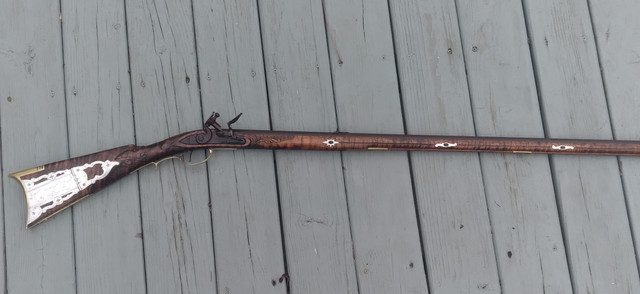
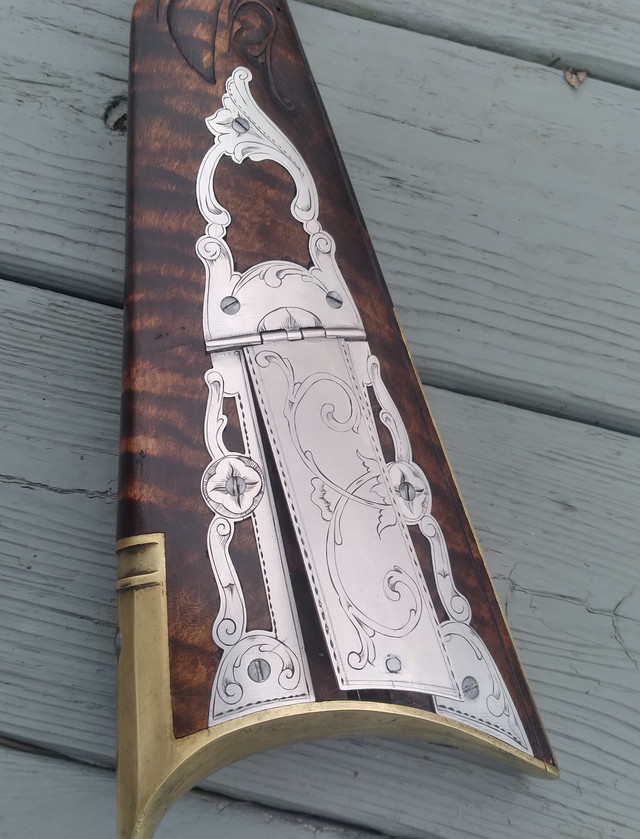

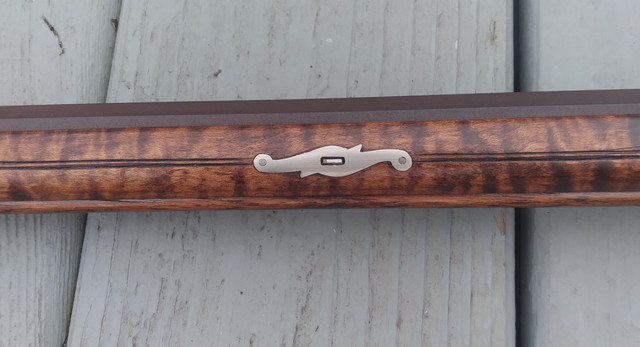
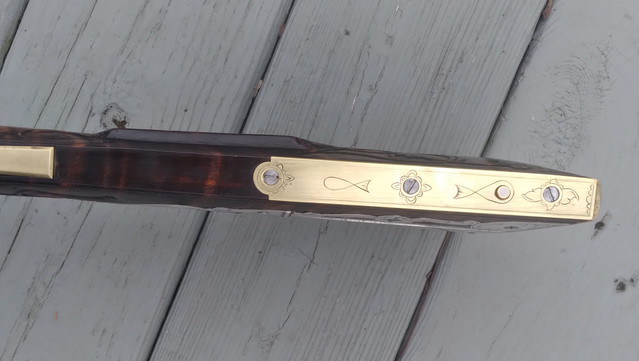


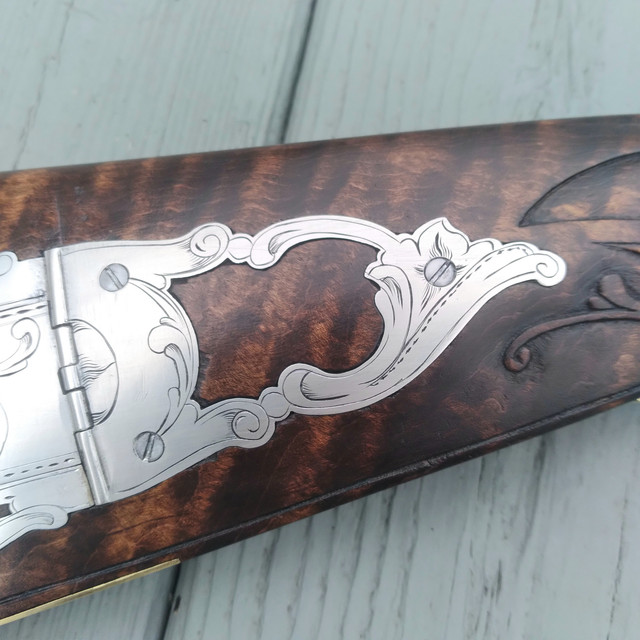
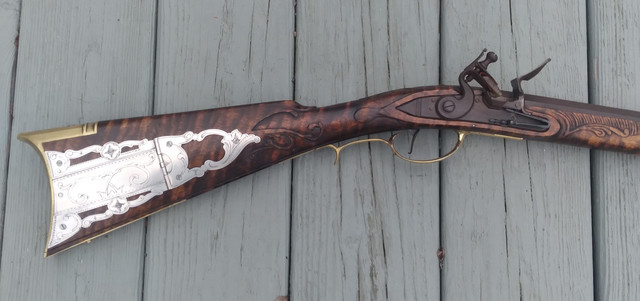
It will be interesting to see if Paul shoots this one. I’m going to visit with him again (hopefully in the not too distant future) for a trip to the range. I’ve never fired my Colt Walker (it is a black powder revolver) and I know very little about shooting these weapons. Paul knows a lot, and I hope to get educated.
As I mentioned at the start of this blog, repaired stocks are not that big a deal. I had an experience where a seller did a poor job packaging a Ruger No. 3 he sent to me. I had the repair accomplished and the stock refinished by a competent shop, the rifle looks better than new, and it is now one of my favorites. It is exceptionally accurate, too. You can read that story here.
More Tales of the Gun stories are here.
Never miss an ExNotes blog:


